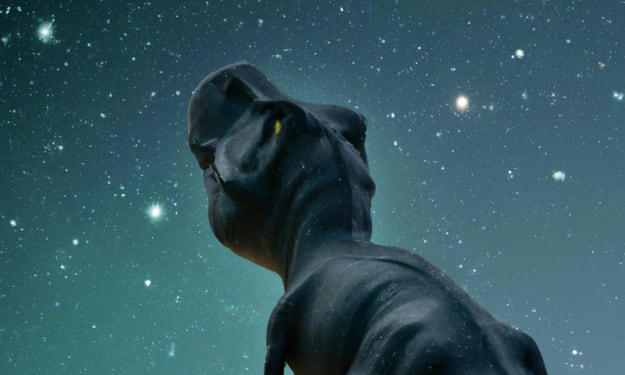
Imagine embarking on one of humanity's pioneering missions to explore the enigmatic expanse of Mars. As your spacecraft approaches the rust-hued orb, an inexplicable and eerie sight captivates your attention. A peculiar formation in a crater bears a striking resemblance to the colossal head of a mammoth bear. The mind reels at the possibilities – who, or what, could have orchestrated such an uncanny spectacle within the heart of a Martian crater? However, the allure of mystery is soon dispelled, replaced by the familiar concept of pareidolia, a psychological phenomenon that impels us to perceive familiar shapes and patterns in random objects.
This discovery sparks an intriguing thought: should we christen this phenomenon "beridolia"? Consider the elements: a V-shaped hill forming a nose, two craters serving as eyes, and a circular arrangement that defines the head. Knowledgeable minds speculate that this facial illusion may have materialized as sediment gradually settled over an ancient impact crater. The nose, intriguingly, could be a mud or volcanic vent that subsequently solidified due to the course of lava or mud flows. Undoubtedly, the crater does possess an astonishing resemblance to the countenance of a bear – an observation that warrants acknowledgment. High-resolution images, courtesy of NASA's Mars Reconnaissance Orbiter and its High-Resolution Imaging Science Experiment Camera (HiRISE), reveal a plethora of peculiar craters on Mars, ranging from whimsical smiley faces to intricate avian forms and even the semblance of an elephant.
Now, let's reflect on the famous "Face of Mars." Captured in 1976 by the Viking Orbiter, the image stirred imaginations with its rock-hewn visage gazing back at Earth. However, the picture's resolution and the play of slanted light contributed to the illusion, painting a story of a monumental sculpture etched by an alien civilization. A recent snapshot from the Mars Reconnaissance Orbiter portrays the same spot as an ordinary hill, relegating the grandeur to mere geological formations. In another curious episode, an alleged miniature Bigfoot was ensnared by the lens in 2008, its stature diminished by perspective – a few inches tall, and just yards away from the camera. Thus, the realm of extraterrestrial Martian apes was conjured.
Journeying deeper, the Themis camera aboard the Mars Odyssey spacecraft grants us a passage into a realm of fanciful creatures and visages. Enter the scene – a jovial Martian countenance, a two-mile-wide crater akin to the wispy wings of a wasp, an intricate result of a fragmented meteorite. The Martian landscape unfolds as a canvas, with lava flows sculpting a woolly mammoth and frost outlining a heart-shaped mesa. A dust-shrouded hummingbird and a howling wolf etched into sandy dunes dance to nature's rhythm. Meanwhile, interlocking gear-like fractures and tectonic forces forge Martian marvels reminiscent of terrestrial alphabets.
Yet, the cosmic canvas extends beyond Mars, offering whimsical formations that spark the imagination. Behold the lunar rabbit and the silhouette of a man on the moon, carrying sticks or a toad, etched into lunar contours. Zooming in on a distant neutron star, a breathtaking "cosmic hand" emerges among a swirling symphony of particles. This extraordinary sight, captured by NASA's Chandra X-ray Observatory, is the result of a rapidly spinning star emitting energetic radiation into space.
Gaze further and witness the haunting beauty of the Horsehead Nebula, an interstellar ballet of darkness and illumination. This ethereal masterpiece, noted in 1888, is forged by dust and gas, while nascent stars shine brightly within its depths. One star stands out – a blazing sentinel in the top left corner, its intense radiation gradually eroding the surrounding nebula. Millennia from now, this celestial equestrian might appear altogether different, shaped by the inexorable forces of time.
In conclusion, our voyage through Mars' fanciful formations and celestial wonders unveils a universe brimming with creativity and intrigue. If this journey has kindled your curiosity, consider sharing this odyssey with friends and fellow adventurers. To embark on further cosmic quests, navigate to the beckoning trails of these videos. Until then, keep your gaze skyward and your curiosity alight.
About the Creator
skyyy clockson
Hi, I love science and mysterious and this why I like to write about them. And I just want to share my education and knowledge with people who follow me. Thank you for your time.





Comments
There are no comments for this story
Be the first to respond and start the conversation.